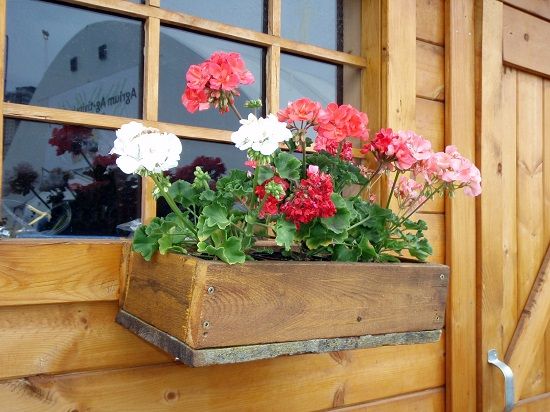What’s The Best Wood For Planter Boxes?

What's The Best Wood For Planter Boxes
If you want a planter that will stay attractive for a long time you need to have it constructed out of a durable wood. There are several types for you to choose from – but don’t worry, there’s a detailed breakdown of the advantages and disadvantages of each of your options below. We’ll help you identify the best wood for planter boxes!
Pressure Treated Woods
You can purchase Pressure Treated Woods of all kinds. However, you’ll find that the best choice for your planter is Pine. Wondering why you can’t just use ordinary untreated Pine? It’s a very soft wood that’s easily marked and damaged. Additionally, you’d have to frequently re-seal the Pine to ensure it’s not affected by rot, fungus, and other general types of weathering.
The Benefits
*Did you know that woods which have undergone pressure treatments are resistant to poor weather conditions, insect activity, and even rot? This is due to a special chemical preservative.
*The material is very durable and as a result is rarely scratched or damaged in any other manner.
*It’s pretty cost-effective.
The Drawbacks
*The chemical preservative that’s applied to Pressure Treated Wood will contaminate any vegetables or other eatable plants that you plan to grow in your new planter.
*Not all Pressure Treated Wood is of the same quality. If you purchase an inferior kind you’ll find it won’t last very long.
Teak Wood
Teak is probably the most common material used for planter boxes.
The Benefits
*You should know that Teak is highly resistant to weathering. This is due to the natural protective oils it produces.
*If not treated with colour preserving sealant only the colour of the wood will be affected, not its durability – it’ll just turn grey.
*Teak is also known for its extreme resistance to rot. Which is ideal for plants since they’re need to be grown in a moist environment.
The Drawbacks
*You’ll have to apply a coat of sealant to the wood every year or so to preserve the Teaks natural colour.
*It’s expensive compared to most other woods.
Cedar WoodIt’s one of the most readily available materials on the market.
The Benefits
*Cedar is incredibly attractive and it will enrich the look of your property with its fantastic colouring.
*The material is known for being relatively light weight. This is ideal for DIY planter constructions – your task will be made as easy as possible.
*If you decide not to consistently re-seal your Cedar planter its colouring will fade, and change to a silvery sheen called a patina.
*It’s thermal coefficient. This means your plants will be kept at a good temperate even in uncomfortably hot weather.
*The wood is naturally resistant to both bacteria and fungi.
The Drawbacks
*The natural colour of a Cedar planter won’t last. In fact, you’ll need to re-seal the material almost every year to preserve it.
*More expensive than most other woods you can choose from.
Now Build It!
Now you’ve got the details needed to decide what the best wood for planter boxes is. So make your purchase and then start the construction process. Not sure how to start? There are a host of instructions freely available on the Internet that will help you out.


















Log in or create an account to post a comment.
Sign up Log in